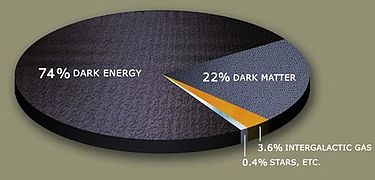
|
Mother Pelican
A Journal of Sustainable Human Development
Vol. 8, No. 3, March 2012
Luis T. Gutiérrez, Editor
|
|
|
|

|
|
|
|
Sustainable Energy: Economics and Technologies
|
SUMMARY
This issue continues the series on sustainable energy, with emphasis on the economics of energy technologies. A legitimate concern about "peak oil" leads to the need for evaluation of non-renewable versus renewable energy technologies. The transition from fossil fuels to clean energy will not happen overnight, but it is time to face the facts about the so-called "green energy" options. A recent book by Charles A. Hall and Kent A. Klitgaard, Energy and the Wealth of Nations, is a good place to start. It provides a careful comparative analysis based on the "energy return on energy invested" (EROI) metric, and concludes that the jury is still out regarding the practical feasibility of replacing fossil fuels with any of the known "green" alternatives (wind, solar, ethanol, etc.) or even the sum total of them all. Absent some earthshaking discovery of a hitherto unknown source of usable clean energy, it is unwise to assume that "green" energy technologies will pick up the slack as fossil fuels are depleted. This would make it even more urgent to articulate socially acceptable mitigation and adaptation options.
OUTLINE
Page 1. Book Review of Energy and the Wealth of Nations, by Luis T. Gutiérrez
Page 2. An Attempt to Define Sustainability, by Leonardo Boff
Page 3. The Politics of Eco-Feminist Goddess Spirituality, by Karen Tate
Page 4. Scarcity of Nonrenewable Natural Resources, by Chris Clugston
Page 5. How Would More Women Help the Economy?, by Douglas Kenrick
Page 6. Valuing Nature Can Transform Agriculture, by Joshua Farley et al
Page 7. The Masculinity Conspiracy - Part 6: Archetypes, by Joseph Gelfer
Page 8. Sustainable and Integrated Development, by C. Koroneos and D. Rokos
Page 9. Spiritual Dimensions of Sustainable Development, by Soetendorp Institute
"For most of the last century, economic growth was fuelled by what seemed to be a certain truth: the abundance of natural resources. We mined our way to growth. We burned our way to prosperity. We believed in consumption without consequences. Those days are gone. In the twenty-first century, supplies are running short and the global thermostat is running high. Climate change is also showing us that the old model is more than obsolete. It has rendered it extremely dangerous. Over time, that model is a recipe for national disaster. It is a global suicide pact." UN Secretary-General Ban Ki-moon’s remarks to the World Economic Forum session on redefining sustainable development, Davos, Switzerland, 28 January 2011.
|
|
Book Review of
Energy and the Wealth of Nations
by Charles A. S. Hall and Kent A. Klitgaard
Luis T. Gutiérrez

Official Earth Week logo that was used as the backdrop for the prime time CBS News Special Report with Walter Cronkite about Earth Day 1970. Source: Wikipedia
|
"The law of conservation of energy tells us that we can't get something for nothing, but we refuse to believe it." Thus wrote Isaac Asimov (1920-1992), whose popular science fiction books were always rooted in solid science. Asimov's point is the central message of Energy and the Wealth of Nations: Understanding the Biophysical Economy, by Charles A. S. Hall & Kent A. Klitgaard, Springer, 2012. It is a timely message at a time when the United Nations has declared 2012 to be the International Year of Sustainable Energy for All while reportedly keeping the vexing energy-related issue of climate change out of the agenda for the Rio+20 Conference on Sustainable Development.
Everybody knows that sustainable development is contingent on energy availability, but few are ready to face the facts of oil addiction, oil depletion, and global warming. The authors of Energy and the Wealth of Nations are doing all of us a favor by compiling what is known about energy biophysics and its relevance to the viability of the economic system worldwide, and by forcefully arguing for more reliance on scientific data to inform the political process of energy policy formulation. While recognizing that what is informative is seldom transformative of short-term priorities driven by vested interests, this book contributes to the inexorable process whereby truth and reason prevail in the long-term. The language is technical but readable, and the book is good study material for all concerned citizens, in particular those currently preparing for Earth Day 2012: Mobilize the earth.
Energy Return on Investment (EROI)
The book is basically about "Energy Return on Investment" (EROI), a measure of "net energy," i.e., how much energy is gained over and above the energy spent at any given point in the energy supply chain. EROI (often abbreviated as EROEI, meaning "Energy Return on Energy Invested") is generally quantified as the ratio of energy gained over energy spent. The mathematics are straightforward but the required data collection and analysis is far from trivial, especially for estimating the value of the denominator ("energy spent") in a such a way that it includes neither more nor less of all the energy spent. In other words, energy spent should include both the energy used by the energy producer and the energy used by producers of all required inputs; thus, for instance, energy used in a drilling operation should include the energy used in producing the drilling equipment, the computers used to manage the operation, etc. Unfortunately, as the book explains, EROI estimates for non-renewable and renewable energy sources show rather clearly that none of the currently known "clean" fuel alternatives (or any combination thereof) comes close to the (relatively cheap) net energy gained from fossil fuels.
Scientific evidence is always about probabilities. The book presents a very strong case that discovering new sources of economically recoverable high-EROI energy, while not impossible, is highly improbable. Likewise, finding ways to eliminate or neutralize environmentally deleterious carbon emissions may still be possible, but is also improbable, and economic constraints induced by fossil fuel depletion make environmental remediation even more difficult. A low physical EROI generally correlates with low financial return on dollars invested. As long as delivering energy is driven by financial profit, investing in clean energy is unattractive, and it is hard to imagine this changing in the foreseeable future. Since energy is required for all human activity, and we have become accustomed to cheap high-EROI energy, the ramifications of this fact are pervasive and do not bode well for the future of clean energy and the transition to sustainability. This is a legitimate concern, and ignoring the issue will not make it go away. Are we to do nothing, or just keep doing "business as usual" and trust that
some miracle will happen?
Economic Theory versus Economic Science
A unique feature of this book is that the issue of declining EROI is explained in the context of economic theory, and in such a way that the reader gets an education on how we have come to the current state of (un)ecological economics. In fact, chapters 1 to 13 are an extended tutorial on the energetic basis of wealth through human history, how it has impacted the structure of society, and how it has influenced - and continues to influence - economic policies and practices. The reader who perseveres is then rewarded, in chapters 14 to 20, with significant insights on "how real economies work;" and these insights are more understandable precisely because they can now be explained at the intersection of the biophysical and socioeconomic sciences.
The careful reader will notice a bit of repetition in going from cover to cover, but some repetition can enhance learning and should be welcomed when it serves to reiterate the essence of issues that are crucial for the common good of humanity and the integrity of the human habitat. In particular, the authors repeatedly complain about current economic "doctrine" being uncritically applied in the USA (and much of the globalized world) without any empirical testing as required by the scientific method. Indeed, economic theories should be considered as "working hypotheses" to be tested to the maximum possible extent before full scale implementation. It is of course unfeasible to test economic theories under controlled laboratory conditions. But it is possible to analyze data, build various kinds of computer models, and assess whether or not theories are passing "the test of time" before they are elevated from "working hypothesis" to normative doctrine and used in the formulation of economic policies.
For instance, what about the uncritical acceptance of "growth" (as defined by GDP) as a primary objective of sustainable development? Is it possible to have infinite material growth in a physically finite planet? Isn't it time to consider (and start testing) an alternative hypothesis, e.g., that a new balance must be found between integral human development and growth measured by consumption of goods and services? In this regard, it is noteworthy that there is a significant lack of direct connectivity between the ecological-environmental and social-economic domains in science overlay maps (see, for example, Rafols et al., 2007, Figure 2). By offering EROI as a scientific method that challenges -- and could enhance -- the economics profession, this book also fosters much needed dialogue between the natural and social sciences.

Pie chart representation of the estimated distribution of dark matter and dark energy in the universe. Source: Wikipedia
|
Sustainable Energy
We don't know what we don't know. It is possible that some new source of energy will be discovered with an EROI much higher than that of fossil fuels and no polluting byproducts. It may happen that Nikola Tesla was right and we may soon learn how to extract energy from a vacuum. Perhaps the so-called "dark energy" will soon become a practically inexhaustible source of "clean" fuels (see this). Possible? Yes. Probable? No. It is even more improbable that any such breakthrough will come to pass before fossil fuels are depleted and/or climate changes make our life miserable. Hall and Klitgaard profess themselves to be neither "optimists" nor "pessimists," but they are scientists and offer their cautious estimates of these probabilities based on the best evidence available at the moment.
Their insistence on giving more weight to scientific evidence in the energy policy debate is certainly justified. However, given the complexity of the issues (both socially and technologically) and the huge risks to be managed, scientific evidence is not enough: a significant degree of wisdom will be required. So what are we to do? According to the precautionary principle, it would seem wise to face the fact that sustainable energy availability will require either increasing the supply or reducing the demand. Since increasing the supply, and burning more and more fossil fuels, is by no means an environmentally sustainable proposition, we must come to grips with the fact that the transition from consumerism to sustainability will require a transition from a high-EROI to a low-EROI economy. The authors make a compelling case in support of this outlook, and the likelihood that they will be ignored in no way diminishes the solidity of the argument.
Research and Advocacy
It is lamentable that, at $99.00, the book is priced out of the market. Surely, it provides a good study resource for anyone interested in sustainable development; and there can be no sustainable development without sustainable energy. As we all must learn to do more with less, it is hoped that future editions will display improved printing quality at a more affordable price. This would be the best way to enhance the book's contribution to the energy debate, thereby providing further incentive for urgently needed research in the feasibility and economics of energy technologies.
The color of competent scientific research is green, but some of the "green" energy alternatives currently being pursued may not be so green after all.
This book should be brought - free of charge - to the attention of NGOs and political leaders worldwide. It is certainly recommended for college students taking courses in sustainability, the environmental sciences, and sustainable engineering. In particular, it is highly recommended for all leaders involved in Earth Day 2012, the International Year of Sustainable Energy for All, and the Rio+20 Conference on Sustainable Development. A five-to-ten page "executive summary" would be instrumental to reach those with no time to read books, and could be used as a more substantive preface in future editions.
References
Benchmark Assessment of Sustainable Engineering Education, Center for Sustainable Engineering and EPA, 2008.
Searching for a Miracle: ‘Net Energy’ Limits & the Fate of Industrial Society, Richard Heinberg, Post Carbon Institute & International Forum on Globalization, September 2009.
Revisiting the Limits to Growth After Peak Oil, Charles A. Hall and John W. Day, American Scientist, Vol. 97, May-June 2009.
Prosperity without Growth: Economics for a Finite Planet, Tim Jackson, Earthscan, 2009.
The next generation of scenarios for climate change research and assessment, Richard H. Moss et al., Nature, Vol. 463, 11 February 2010.
Earth System Science for Global Sustainability: Grand Challenges, W. V. Reid et al, Science, Vol. 330, 12 November 2010.
The Second Law of Economics: Energy, Entropy, and the Origins of Wealth, Reiner Kümmel, Springer, 2011.
Plato's Revenge: Politics in the Age of Ecology, William Ophuls, MIT Press, 2011.
Sustainability: A Comprehensive Foundation, University of Illinois and CNX, 2011.
Ecological Ethics, Patrick Curry, Polity Press, 2011.
Special Issue: New Studies in EROI (Energy Return on Investment), Doug Hansen and Charles Hall, Guest Editors, Sustainability, 2011.
|
|Back to SUMMARY & OUTLINE|
Page 1
Page 2
Page 3
Page 4
Page 5
Page 6
Page 7
Page 8
Page 9
Supplement 1
Supplement 2
Supplement 3
Supplement 4
Supplement 5
Supplement 6
PelicanWeb Home Page
|
|
|
"Energy flows. Matter cycles. Life webs."
Dr. Art's Guide to Planet Earth, 2000
|
|
Page 1
|
|
FREE SUBSCRIPTION
|
![[groups_small]](groups_small.gif)
|
Subscribe to the
Mother Pelican Journal
via the Solidarity-Sustainability Group
Enter your email address:
|
|
|
|